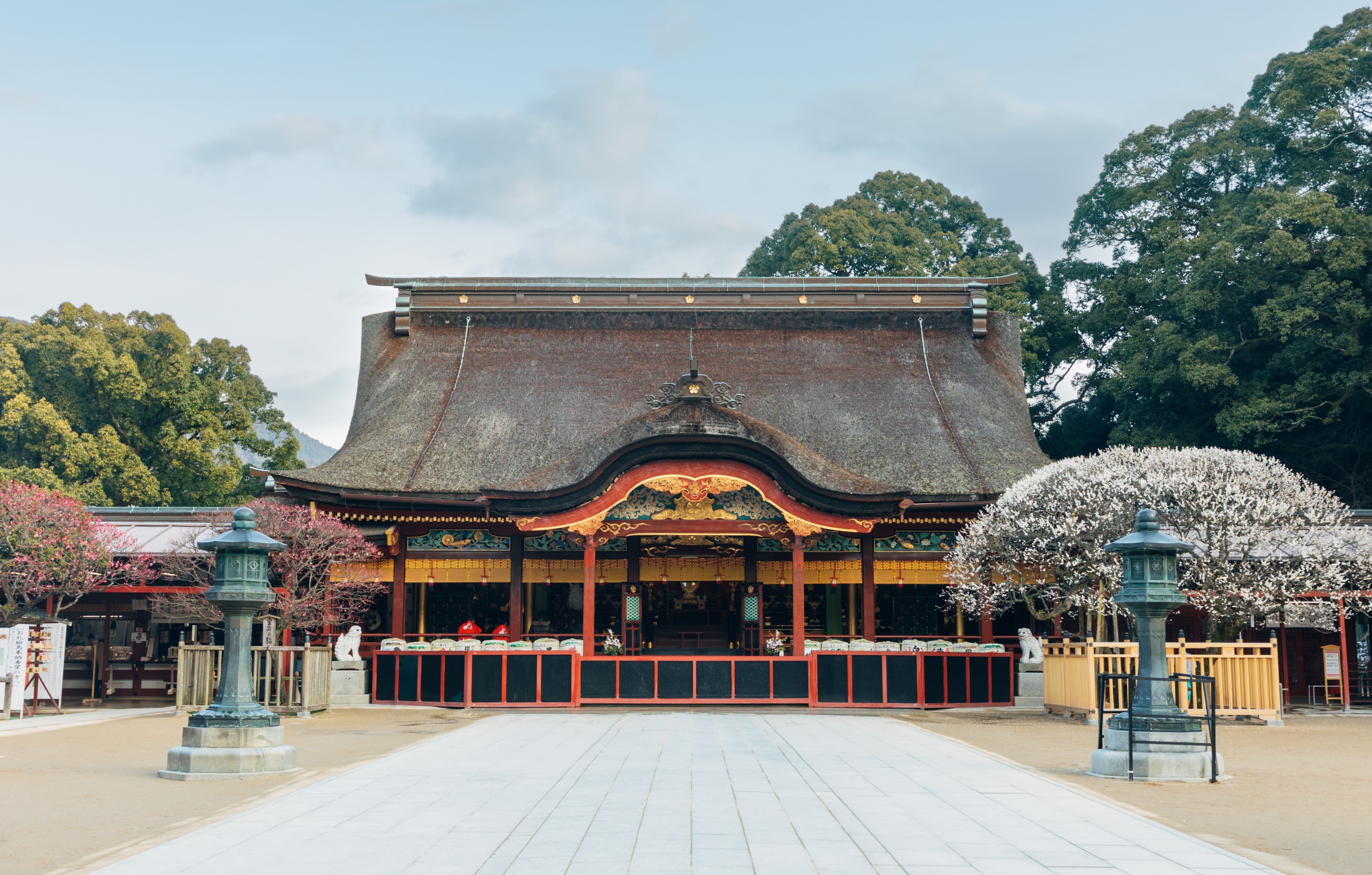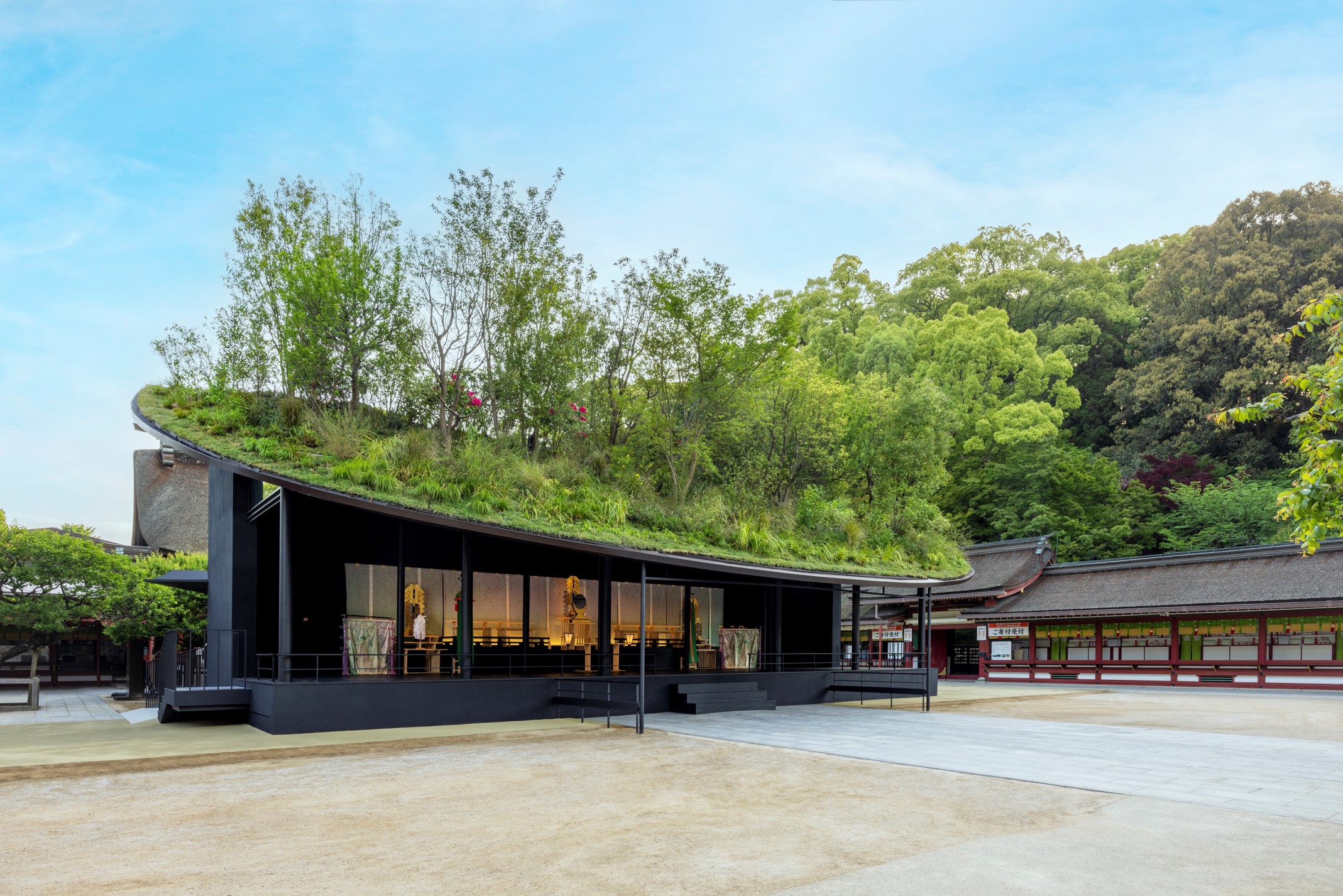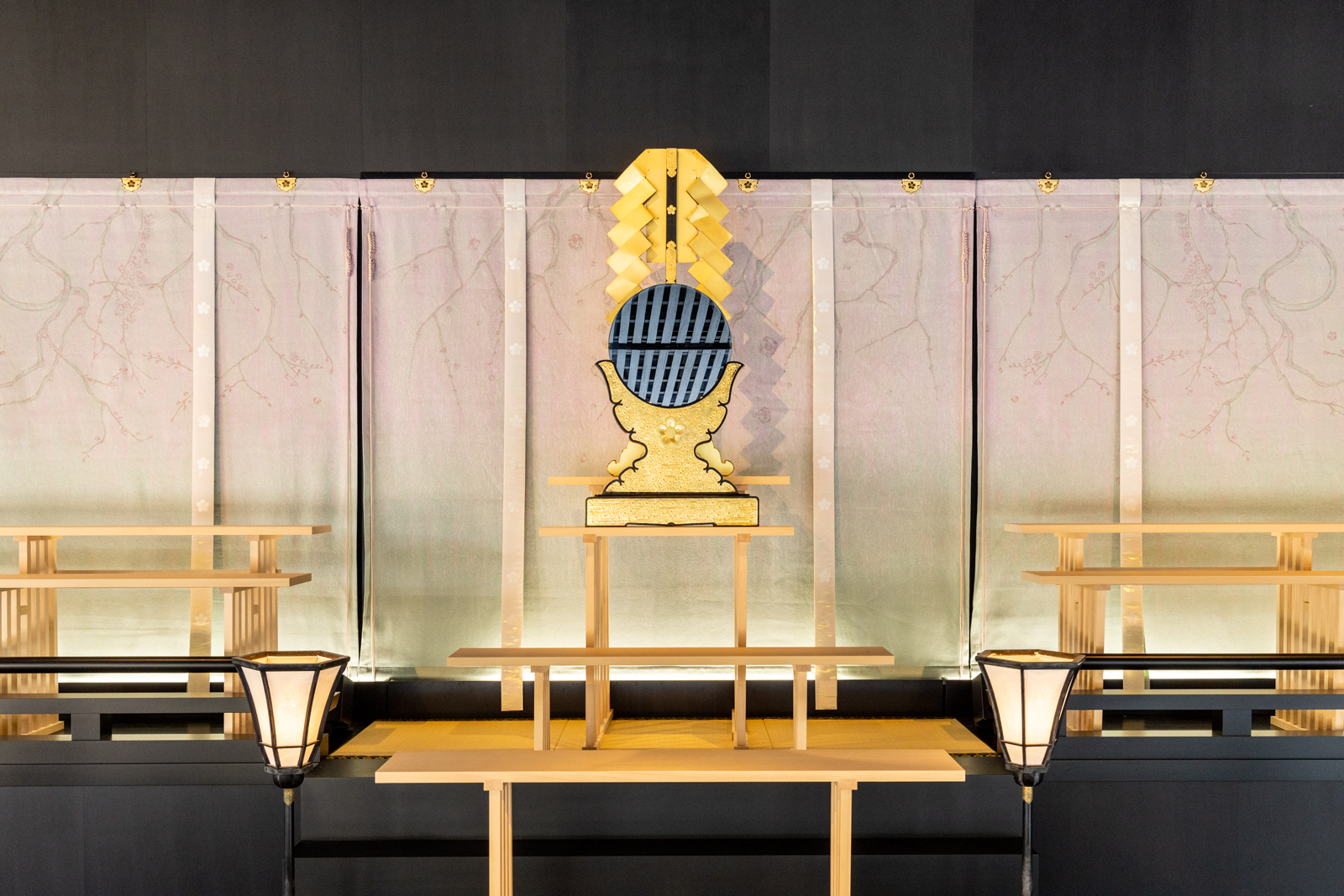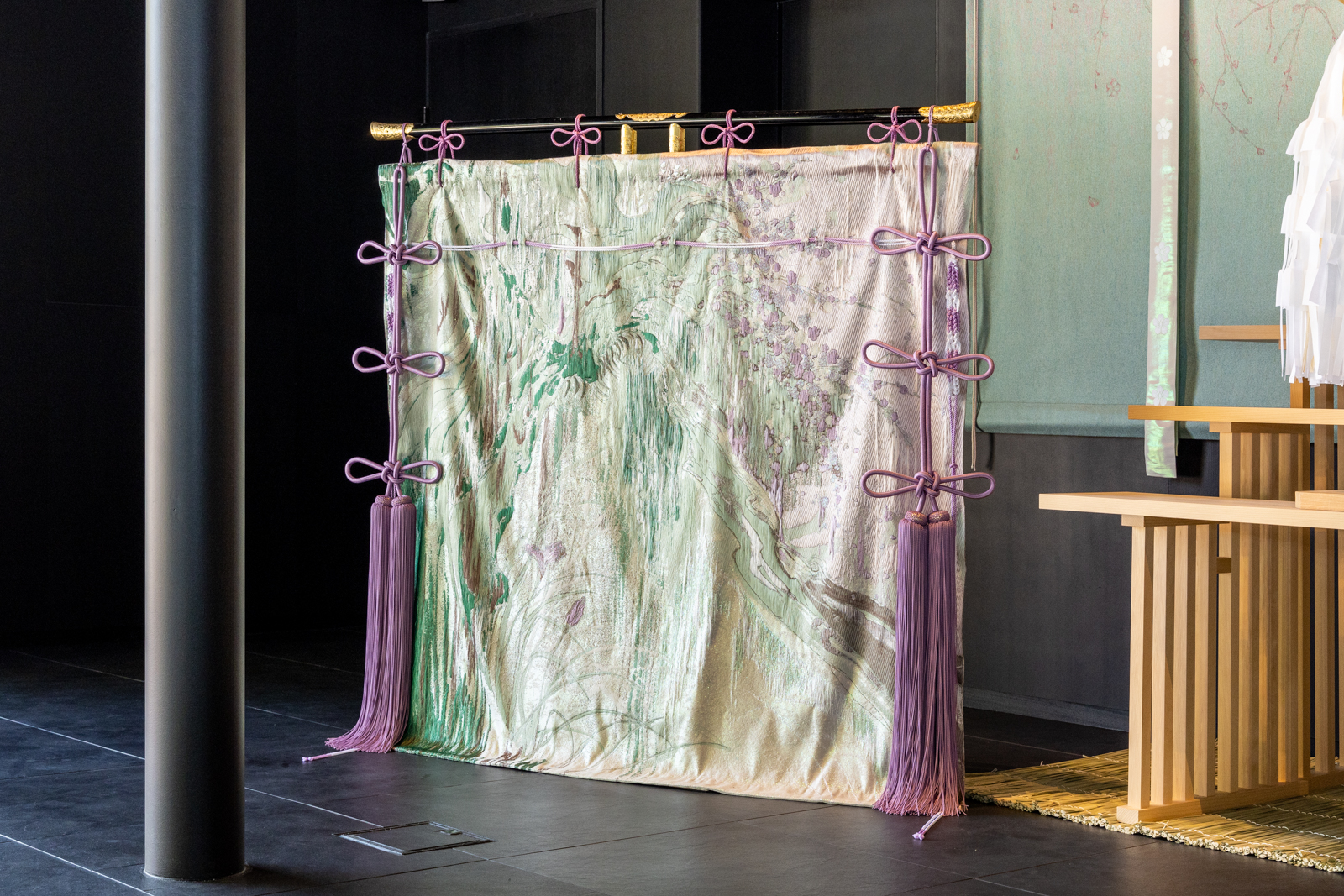1,100-year-old shrine undergoes renovation, opens temporary building designed by modern artists

Designed with the spirit of the shrine in mind but new methods, it’s the perfect combination of ancient and modern.
There are many shrines in Japan, but Dazaifu Tenmangu Shrine, located in Dazaifu, just outside of the city of Fukuoka in Kyushu, has a strong claim to being one of the most important. After all, it’s built on the grave of the Heian Era scholar, poet, and politician Sugawara no Michizane, who is now eternally enshrined as Tenjin-sama, the god of learning, culture, and the arts. It also serves as the head of the 12,000 Tenjin shrines all around Japan.
Because of its importance to Tenjin-sama, who was known as a master of Chinese and waka poetry, many artists and poets have visited Dazaifu Tenmangu over the eras and dedicated works to the shrine. Nowadays, it’s a top tourist spot in Kyushu, but if you plan on visiting it in the next three years, know that it’s going to look a little bit different than what you might expect.
▼ Dazaifu Tenmangu’s original main shrine building

Tenjin-sama is closely associated with the number 25, and thus Dazaifu Tenmangu has held a festival every 25 years since Tenjin-sama’s death. 2027 will be a monumental year: the 1,125th anniversary of Tenjin-sama’s death, so the shrine is gearing up for major celebrations. Ahead of that, as of this month, the shrine began renovations on its main shrine building, which is an important cultural property that hasn’t been updated in 124 years.
As a result, the main shrine has been closed, and in front of it, they’ve built a temporary shrine where visitors can still go to pray to Tenjin-sama. But it isn’t just any ramshackle pavilion. In order to connect the spirit of the god’s divine virtues to the present, modern artists were recruited to participate in the design and decoration of the building. Sou Fujimoto, an internationally recognized architect who designed the venue of the Japan World Expo in Osaka, spearheaded the creation of the building with his architecture firm, and the curtains and screens decorating the interior were designed by internationally renowned fashion brand Mame Kurogouchi.

Inspired by the expansive natural beauty in and around Dazaifu Tenmangu, which the shrine takes great pride in, Fujimoto created a temporary shrine with a forest on its roof, lending the building a green, peaceful, beautiful atmosphere. The flora includes plants raised by the shrine’s gardeners, including plum trees, which are a symbol of the shrine. Just like the nature around it, the greenery will grow and change with the shifting of the seasons, revealing a different face for every visit. As for the shape and interior of the building, Fujimoto took influences from the spirit of the original building but gave them a modern twist.

Mame Kurogouchi created fabric designs based on the history of the shrine and of Tenjin-sama, as well as incorporating the essence of the shrine as a whole, using a combination of time-honored dyeing methods and modern looms. The curtains are decorated with plum blossoms, the shrine’s symbol, and have a gorgeous gradient of color and pattern.

The silk used to make the screens was dyed with plum and camphor branches as well as precious gromwell roots using traditional methods, and then woven together with modern synthetic fibers. The threads, which appear to be flowing like water, actually represent a rainstorm the designer, Maiko Kurogouchi, experienced while visiting Dazaifu. According to the designer herself, she was checking out the hole of a giant camphor tree on the grounds when the downpour started, and the feeling of being protected by the tree and the scenery she viewed while inside inspired her to design these screens.

The shrine conducted its Ceremony for Moving a Deity to a New Shrine on May 13, and the temporary building, which will now be the site of worship and rituals for the duration of the renovations, will be open to the public for three years. While it may not be a permanent fixture, it definitely seems worth visiting to see the stunning modern architecture and beautiful screens and curtains.
If you do go, don’t forget to make a pit stop to try Matsugae mochi from nearby Miyajidake Shrine, or, if you’re a Demon Slayer fan, stop by Honmangu Kamado Shrine, also in the neighborhood, to check out its plentiful Demon Slayer fan art!
Source, images: PR Times
Related: Dazaifu Temangu Shrine
● Want to hear about SoraNews24’s latest articles as soon as they’re published? Follow us on Facebook and Twitter!
Credit:

0 comments:
Post a Comment